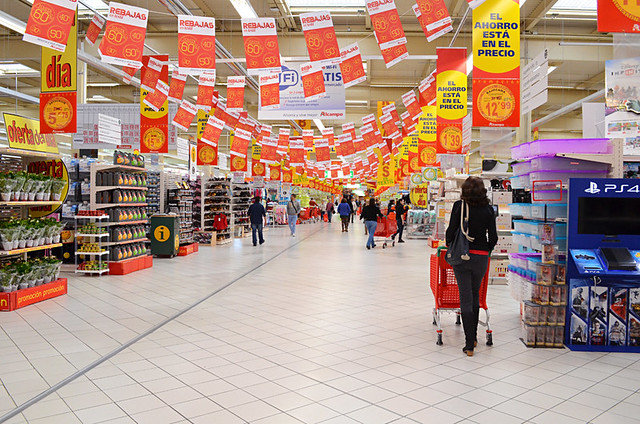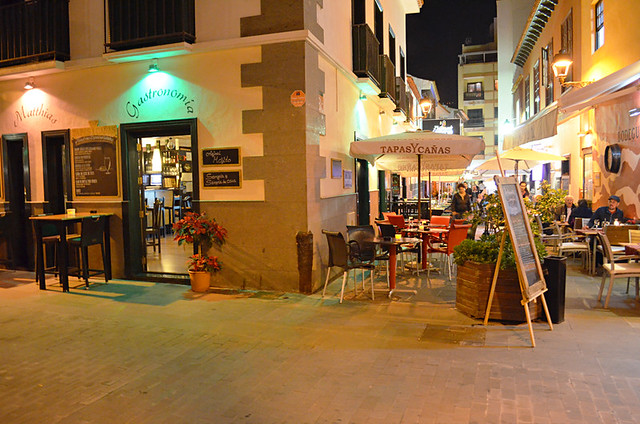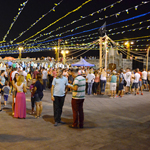Some articles about Brexit in the UK press have featured the views of expats, usually in Spain and mainly those who live in or near popular holiday resorts. One in A Place in the Sun magazine focused on Playa de las Américas on Tenerife whilst another in The Guardian concentrated on Alicante, specifically an area described as a ‘British enclave’.
Generally these types of article feature people who haven’t made much of an attempt to adjust to the rhythm of the place they’ve set up home, instead recreating a sunnier and warmer version of the world they’ve left behind.
Sticking with the familiar rather than dipping nervous toes into a different cultural scene is all too easy. None of us feel comfortable stepping out of our… well comfort zones.
But for all those who make no effort at all to integrate or try a different way of doing things, there are plenty of incomers and people who visit Tenerife on a regular basis who do; either going the whole hog, or adjusting to some aspects of a different way of local life.
These are ten ways to tell if you’ve gone seriously local on Tenerife.
Roundabout etiquette

If you never, ever venture into the inside lane of roundabouts then you’ve definitely picked up local driving habits, albeit not good ones. In truth, it’s one you have to learn early in order to survive and not be destined to spend the rest of eternity driving around a small circle. The really annoying thing is do it right and you’ll be rewarded with angry gestures and the honking of car horns.
Become a night owl

Outside of resort areas anyone who wants to enjoy the best of the local after dark scene in bigger towns shouldn’t dream of going to a bar until at least 11pm, and preferably after midnight. Some towns on Tenerife are labelled as not having lively nightlife by people who haven’t followed this rule. Actually it’s not just in bigger towns. In the cave hamlet of Chinamada not so long ago I saw a poster advertising a fiesta dance there, starting at 11.30pm.
Stick to the shadows

A sure sign of someone who’s gone local is instead of seeking the sun they avoid it, walking on the shady side of the street or sitting at tables in the shade outside bars and restaurants.
Dropping S from words

Instead of asking for ‘dos cervezas’ and answering ‘gracias’ when they’re handed over, ordering ‘daw cervezas’ and answering ‘graciah’ shows you’ve picked up the local habit of dropping the S from the ends of some words. It works nicely on the Canary Islands, but next time you’re on mainland Spain you might get some odd looks. We were once told off for not speaking ‘properly’ when we did it in front of a Spanish mainlander.
Sunbathe anywhere

Sun loungers are for Northern European visitors. You can tell when holiday seasons change on Tenerife just by looking at how people sunbathe on beaches like Playa Jardín in Puerto de la Cruz. In winter months the sunbeds are full. In summer when the Spanish arrive and more Canarios head to the beach, the sunbeds are empty and the sand near the water’s edge is rammed with people. The real test whether you’ve gone local is if you’re happy to sunbathe lying on pebbles, rocks or even slabs of concrete.
Supermarket dash

This is one for anyone who truly wants to embrace local habits. Don’t finish your supermarket shopping and then join a queue. Leave your trolley in a queue at the tills when you’ve still got lots of stuff to buy. Then return at regular intervals to make sure nobody who has actually completed their shopping has jumped the queue by pushing in front of your ‘abandoned’ trolley.
Dine late

People who eat dinner in a Tenerife restaurant at 5/6/7pm are more likely to encounter locals still finishing lunch than locals eating dinner. Even 8.30pm is borderline too early. Eat late for an authentic dining experience. Tripadvisor is full of reviews where visitors have commented a restaurant has no atmosphere… because they’ve eaten outside local dining times.
Hold a complete conversation using two words

If you ever get to the point where you’ve held a decent length conversation in Spanish using only ‘si’ and ‘vale’ then you have seriously gone local. Even if those are the only two Spanish words you know you can get away with sounding fluent as long as you follow these instructions. When a Canario speaks to you, respond with “si, si, si… vale, vale… si, si, si” wait till the person you’re speaking to says something else, then repeat. And so on. It works a treat.
Finding a prime spot to watch fiesta parades

This one is advance level. If you can roll up for a fiesta parade a few minutes before it starts and mysteriously manoeuvre your way into a prime spot, usually in front of some unsuspecting visitor who isn’t even aware you’ve done it, then congratulations, you’ve achieved grand master of Canarian ninja techniques.
Wear winter clothes in summer temps

It doesn’t matter if it’s 24C in the shade and most visitors are wearing tee-shirts and shorts, it’s November and in November if you want to follow the local ways you change to winter fashion no matter what the temperature is. From that point you continue to go out wearing woolly jumpers and boots until it is officially spring.
If there’s anyone out there who can tick off these 10 then kudos, you’ve embraced going local on Tenerife with an enthusiastic bear hug. You’re more local than many locals.
As for us, we do some of these on a regular basis, others only now and again. But there are still three we’ve never actually managed to achieve.





Love Tenerife my husband and I go twice a year and only got back home on Sunday,but we are struggling to find a book that has pictures of los Christian is and playa de las Americas before it was founded by the tourists and builders.
Next time you’re in Los Cristianos go to the cultural centre and ask about a book called the History of Los Cristianos which was published by the Arona tourist board. I think you’ll find it very interesting as it includes information and pictures about Arona and its resorts pre-tourism.
I have had many very short conversations .must be a local